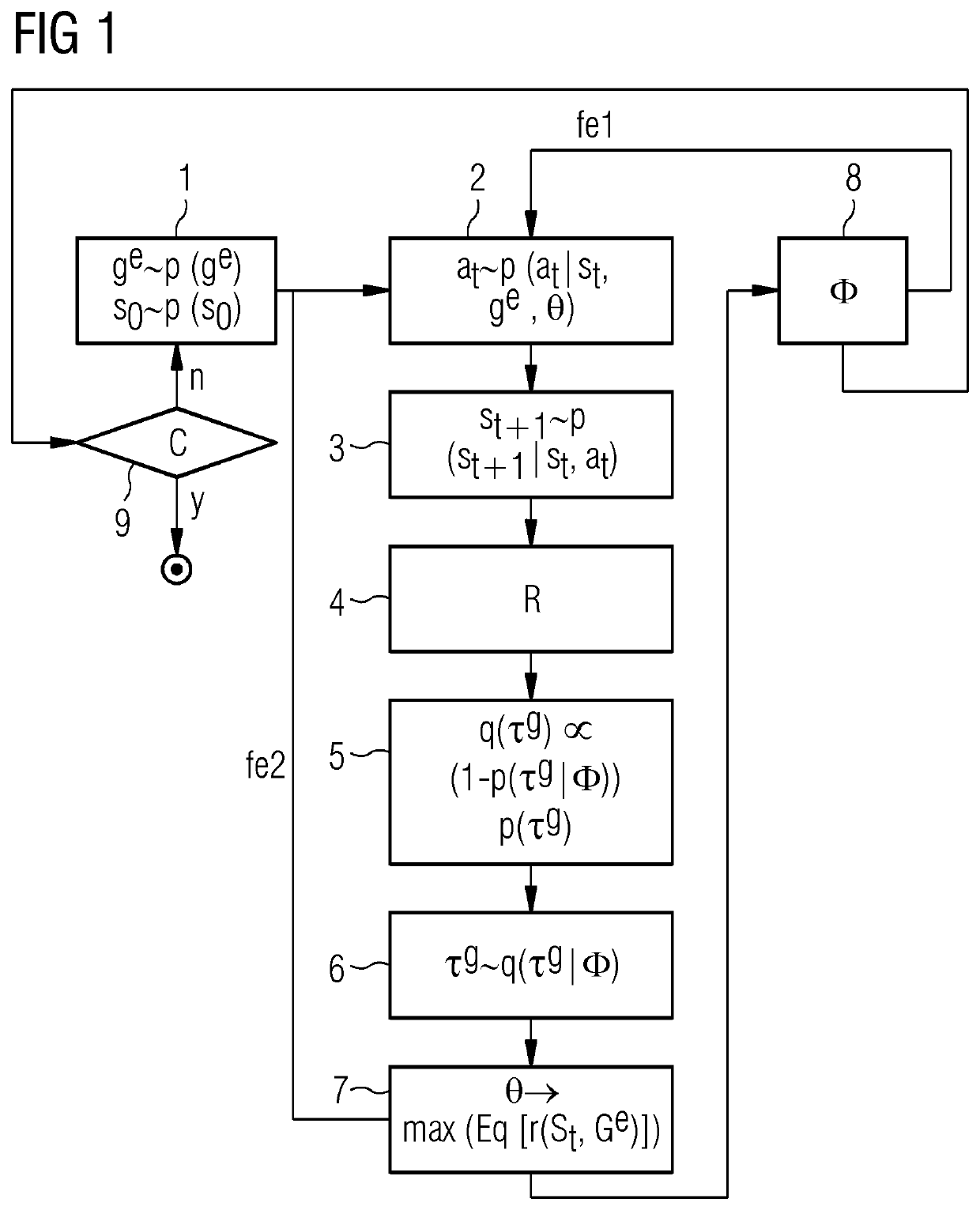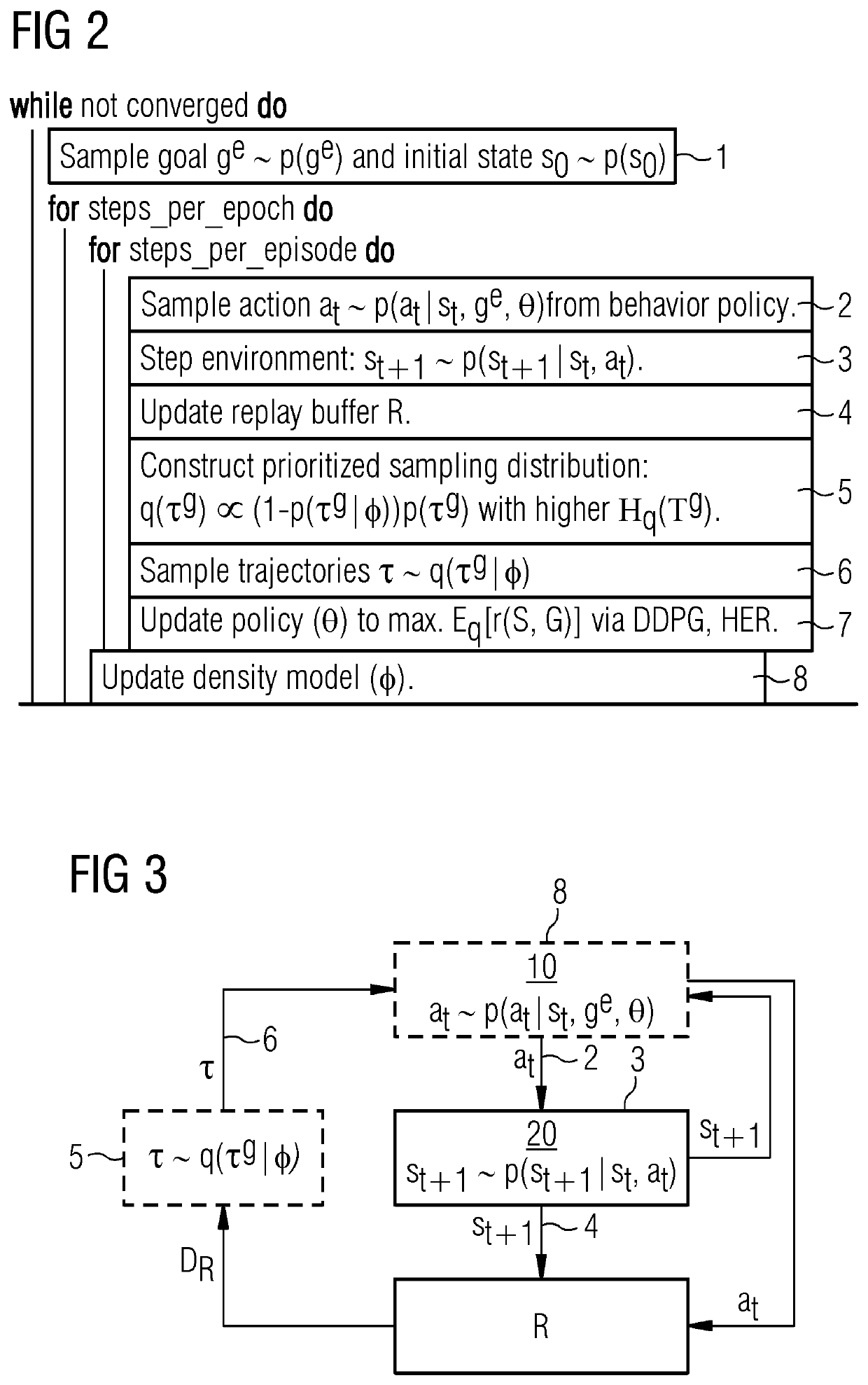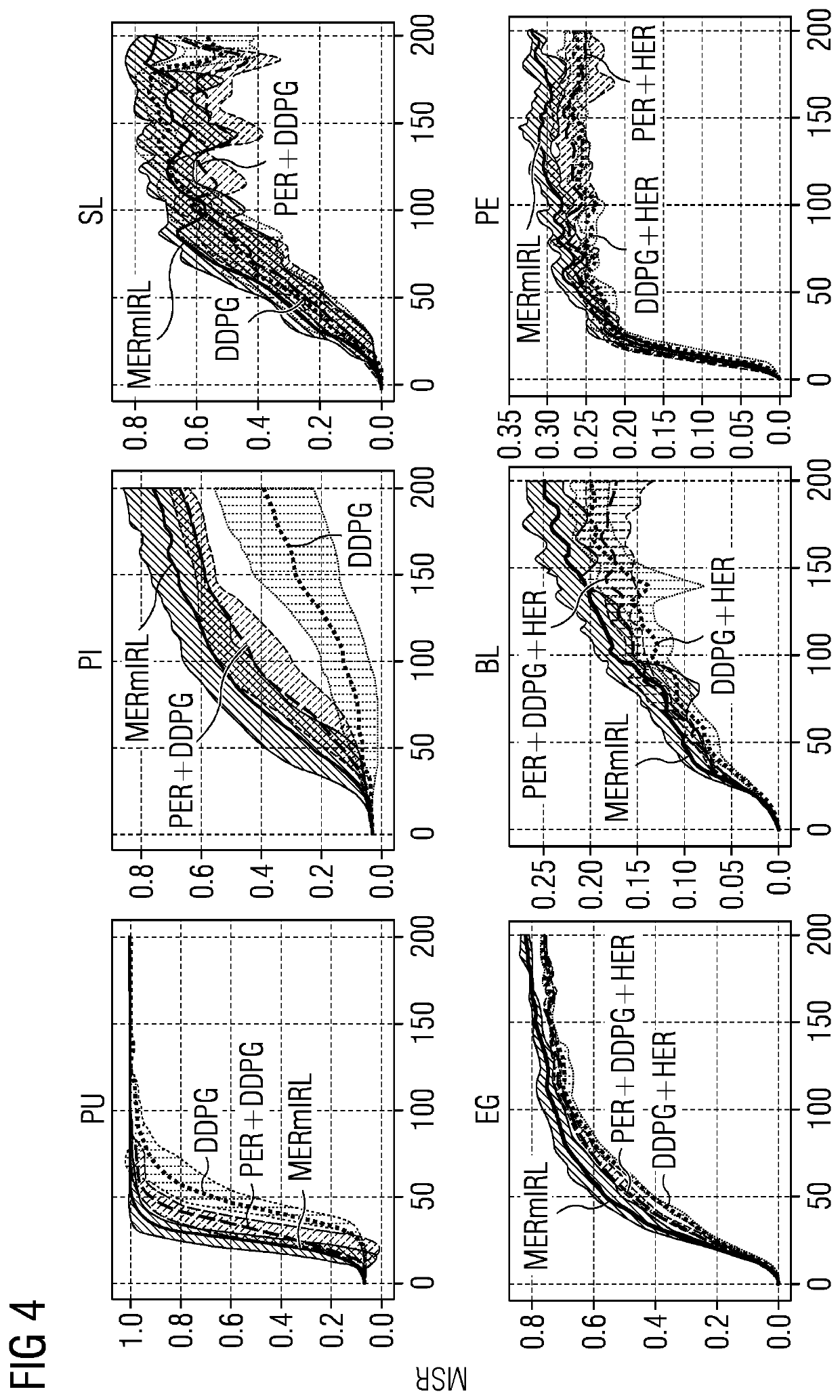Maximum entropy regularised multi-goal reinforcement learning
a multi-goal, reinforcement learning technology, applied in the field of computer-implemented methods of training artificial intelligence systems, can solve the problems of large gap between the learning efficiency of humans and rl agents, unstable training of universal function approximators, and agents who could perform badly for a long time before learning anything
- Summary
- Abstract
- Description
- Claims
- Application Information
AI Technical Summary
Benefits of technology
Problems solved by technology
Method used
Image
Examples
Embodiment Construction
[0050]In FIG. 1 a flow chart of an embodiment of the computer-implemented method according to the first aspect of the present invention and of the computer program according to the second aspect of the present invention is exemplarily depicted.
[0051]In FIG. 2 a corresponding algorithm of the embodiment of FIG. 1 is schematically depicted.
[0052]As depicted in FIGS. 1 and 2 the computer-implemented method of training an artificial intelligence (AI) system (MER multi-goal RL method) and the corresponding computer program comprise the iterative step of:[0053]sampling 1 a real goal ge; and
for each episode of each epoch fe2 of the training the iterative steps of:[0054]sampling 2 an action at;[0055]stepping 3 an environment;[0056]updating 4 an replay buffer ;[0057]constructing 5 a prioritised sampling distribution q(ôg);[0058]sampling 6 goal state trajectories ôg; and[0059]updating 7 a single-goal conditioned behaviour policy é; as well as after each episode for each epoch fe1 of the train...
PUM
 Login to View More
Login to View More Abstract
Description
Claims
Application Information
 Login to View More
Login to View More - R&D
- Intellectual Property
- Life Sciences
- Materials
- Tech Scout
- Unparalleled Data Quality
- Higher Quality Content
- 60% Fewer Hallucinations
Browse by: Latest US Patents, China's latest patents, Technical Efficacy Thesaurus, Application Domain, Technology Topic, Popular Technical Reports.
© 2025 PatSnap. All rights reserved.Legal|Privacy policy|Modern Slavery Act Transparency Statement|Sitemap|About US| Contact US: help@patsnap.com



